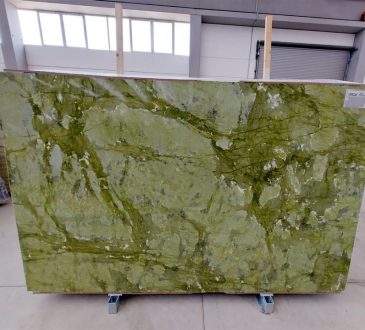
In the current economic climate, every expense adds up, and life is very fast-paced. Because of that, keeping a home clean and inviting can be quite challenging, but household chores don’t just disappear. As the prices of cleaning products and services go up, an increasing number of homeowners decide to roll up their sleeves and turn towards a more hands-on DIY approach. However, there are still many home cleaning tips and tricks that people aren’t aware of that can offer additional practicality and cost-saving options when they’re DIY home cleaning.
The Basics of DIY Home Cleaning
DIY home cleaning isn’t just a cost-saving measure but also a combination of resourcefulness, personal choice and a way to avoid commercial products and embrace homemade ones. This also makes it a lot more eco-friendly.
The basic elements when DIY home cleaning are simple, everyday ingredients, such as vinegar and baking soda, which are the most common staple items in any kitchen pantry. With only a few of them, you can inexpensively and effectively tackle the majority of household tasks.
Money-Saving Cleaning Tips
Use Everyday Household Items
A kitchen cupboard can be a great source of cleaning supplies. For example, baking soda can lift grime from tiles, while apple cider vinegar is more than just a condiment and can effectively strip away limescale.
Baking soda is also known to be a great deodorising agent, and you can use it to remove unpleasant smells from many different areas, such as your shoes, the fridge, your pantry or washing machine. All you’ll need to do is put it in a sachet or sprinkle it on the smelly spot.
On the other hand, vinegar is a great laundry detergent booster, and it can actually be a lot better for the fabrics of your clothing items. Unlike commercial fabric softeners, it doesn’t leave a residue film over the fibres, which can damage them in the long run and reduce their lifespan.
Take Preventive Cleaning Measures
Regular maintenance is the key to tackling dirt and grime. A simple daily wiping of the surfaces prone to residue accumulation and a quick sweep of the floors will significantly reduce the need for more labour-intensive deep cleaning, which will also reduce your expenses on harsh chemical cleaners.
To prevent such situations, consider cleaning your bathroom and kitchen sink and scrubbing the toilet bowl daily. If you live with children and parts, it’ll also be necessary to vacuum at least once a day so you don’t have to deal with any big messes later on.
Opt for DIY Cleaning Tools and Equipment
You can easily avoid spending money on cleaning cloths and sponges at the supermarket by transforming old t-shirts and towels into cleaning rags. This isn’t only a cost-effective solution, but it’s a method that often shows a lot better results than store-bought alternatives in terms of absorption and durability.
Consider Bulk Buying and Proper Storage
If you’re starting with DIY home cleaning and you’ve stocked up in bulk on essential items, such as vinegar and soda bicarbonate, keep in mind that it’ll also be important to store them right to prolong their shelf life and preserve their effectiveness.
Adopt Energy-Efficient Cleaning Techniques
It’ll be very beneficial to adopt cleaning methods and techniques that will conserve water and electricity, such as washing full dishwasher loads or choosing cold water cycles for laundry. These can take a significant amount off your utility bills in addition to reducing the costs of commercial cleaning supplies.
Opt for Local Cleaning Resources
Embrace any locally produced resources for cleaning. This will be both practical and economical, and they can turn out to be easier to access and will likely cost less because of the removed transportation costs.
Adapting to the Local Weather
If you live in a humid climate, dealing with mould will usually be a common challenge. Luckily, a simple solution made of vinegar and water can be very effective for such tasks.
Turn to Traditional Home Cleaning Hacks
The most well-known traditional cleaning trick is cleaning the windows and mirrors with newspaper for a streak-free finish. It’s a simple, effective and resourceful solution if you don’t have glass-specific cleaners on hand. However, you should also be mindful of the type of newspaper you’re using. Some modern newspapers are produced with a type of ink that doesn’t provide the best cleaning results.
An alternative and safer method to window and mirror cleaning instead of using newspapers is using coffee filters, which provide incredible, streak-free results. You can also use them to clean any electronic screens if you don’t have special microfibre cloths for that purpose.
Consider Gardening-Based Cleaning Solutions
Many herbs, for example, lavender and rosemary, can be turned into natural, aromatic cleaning agents, which will bring the scent of your garden indoors.
You can also use your garden tools for home cleaning. For example, any hard-to-reach small crevices and corners can be dealt with very easily using a pair of cotton gardening gloves. All you’ll need to do is put them on and use your fingers to remove any dust and residue.
Make Use of Tea Leaves
Making use of the tea leaves that you’ve steeped can be a great way to reuse waste and freshen up your carpets and wooden floors.
Think About Alternative DIY Cleaning Hacks
For more stubborn stains or tricky spots, there are alternative cleaning solutions made from kitchen ingredients that you can try. For example, a combination of lemon juice and salt can easily eliminate rust on various surfaces.
In addition to that, there are many unexpected ways in which you can use some of your non-cleaning household appliances. For example, if you have children and often face the challenge of removing crayon marks from your walls, you can easily take care of that with your blow dryer. Instead of spending your free time scrubbing them, use it on the affected surfaces, and the heat will melt the wax in the crayon. Make sure to also have a pair of cloths or paper towels close by so you can immediately wipe the residue.
Safety Considerations When DIY Cleaning
Opting for DIY cleaning solutions to tackle different tasks around the household is undoubtedly great, but it’s still important to exercise caution with homemade mixtures, especially if you live in a home with children and pets. Some of them can be very toxic to your curious animal companions, which can either lick the container with the solution or the surface you’ve cleaned with it. For this reason, it’ll be very beneficial to label and store them properly to keep your home safe.
Evaluating the Impact on Household Expenses
Transitioning to DIY cleaning methods can certainly result in noticeable savings on your household expenses. You’ll see a significant impact if you decide to compare the results of the new practices you implement with the previous costs of buying commercial products and opting for domestic cleaning services. Consider keeping track of your spendings once you start and it’ll often reveal a distinct financial advantage.
Final Words
It’s clear that embracing DIY home cleaning is more than just a cost-effective practice. It’s also a step towards making your household more sustainable and creating a more personalised domestic life. In addition to the tips suggested above, consider also sharing your own findings with a wider DIY home cleaning community and learning new ones from its members.




